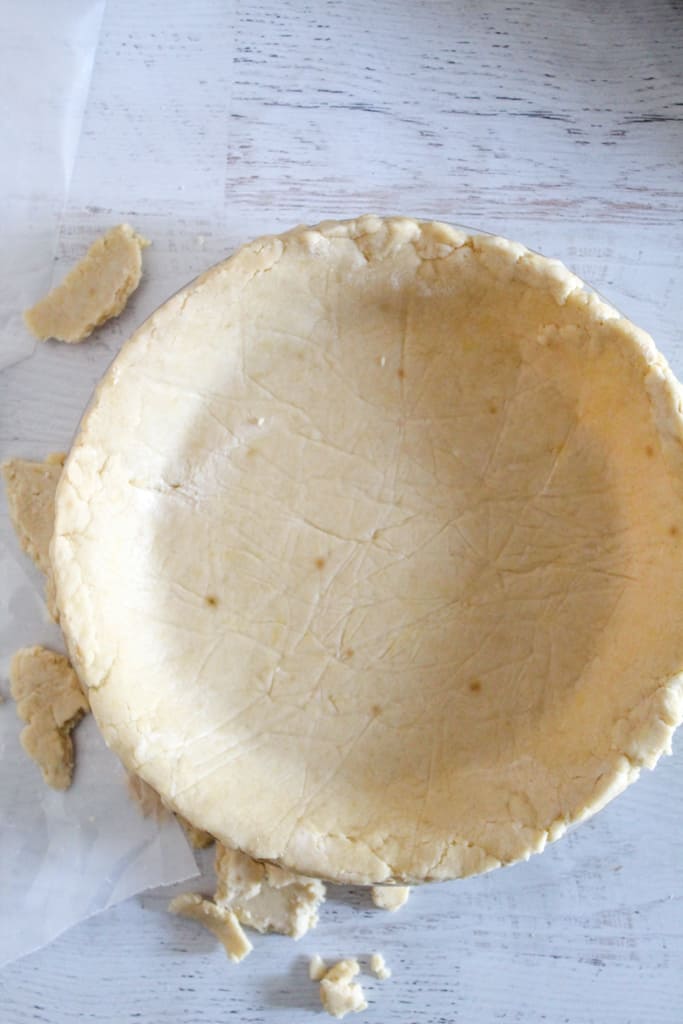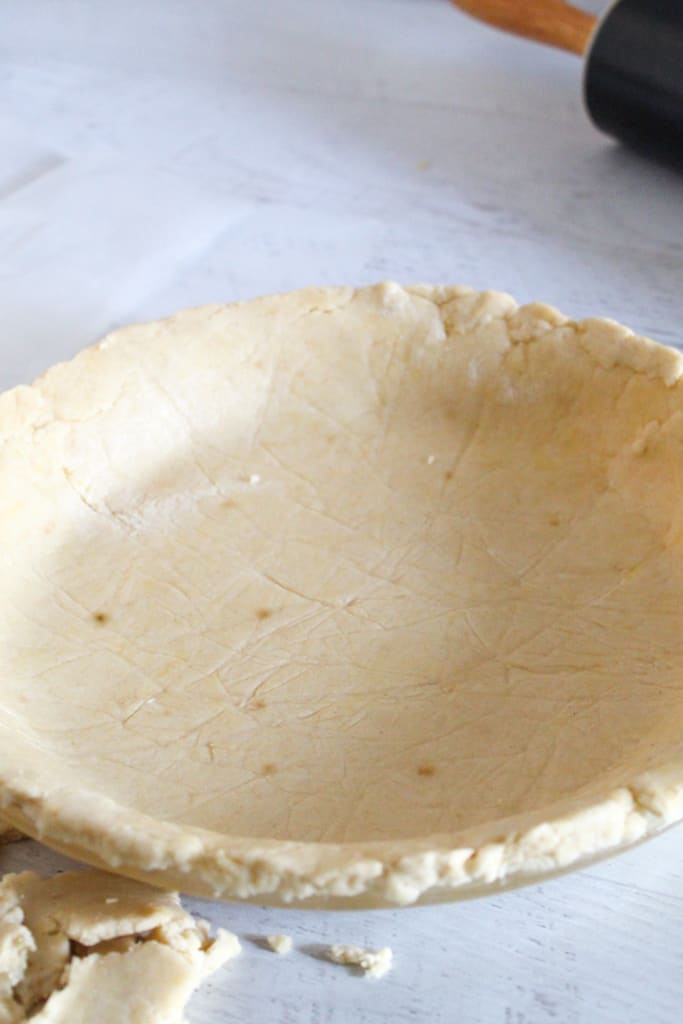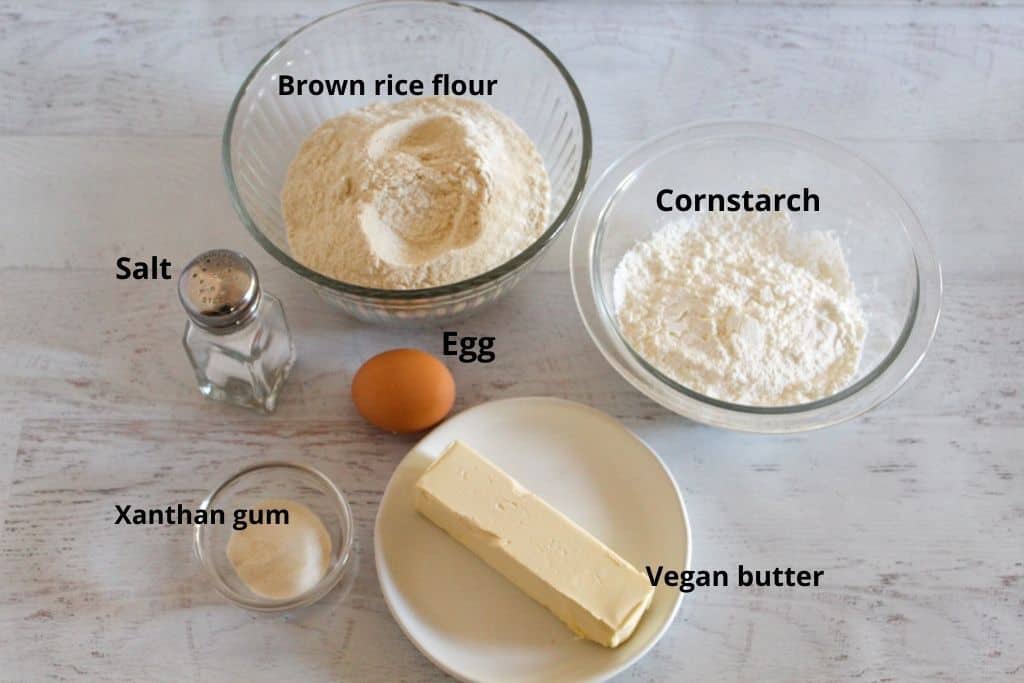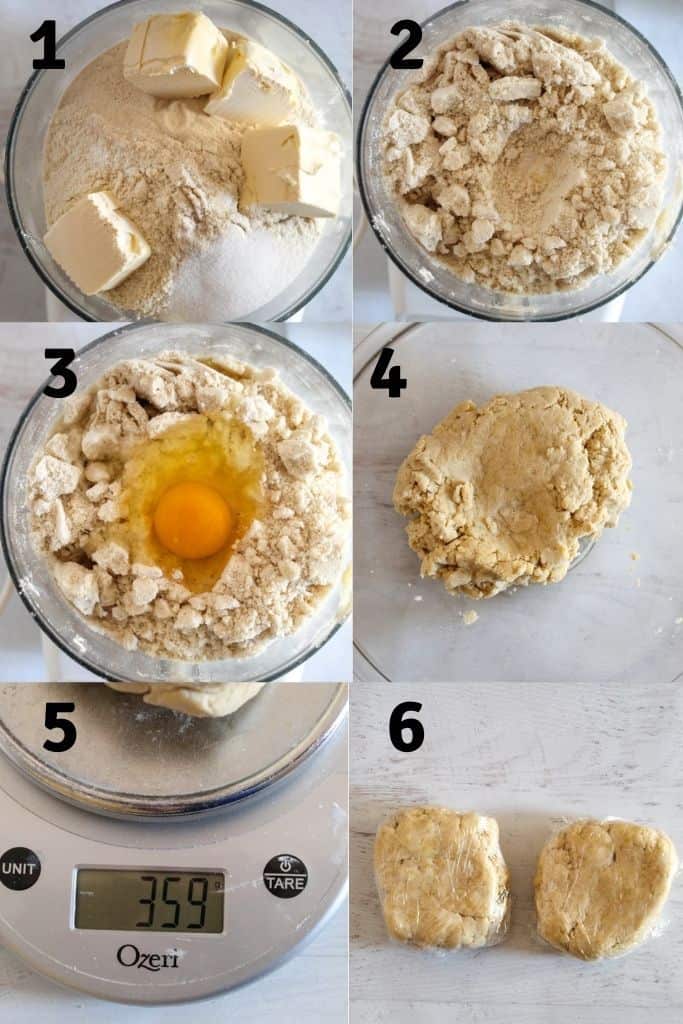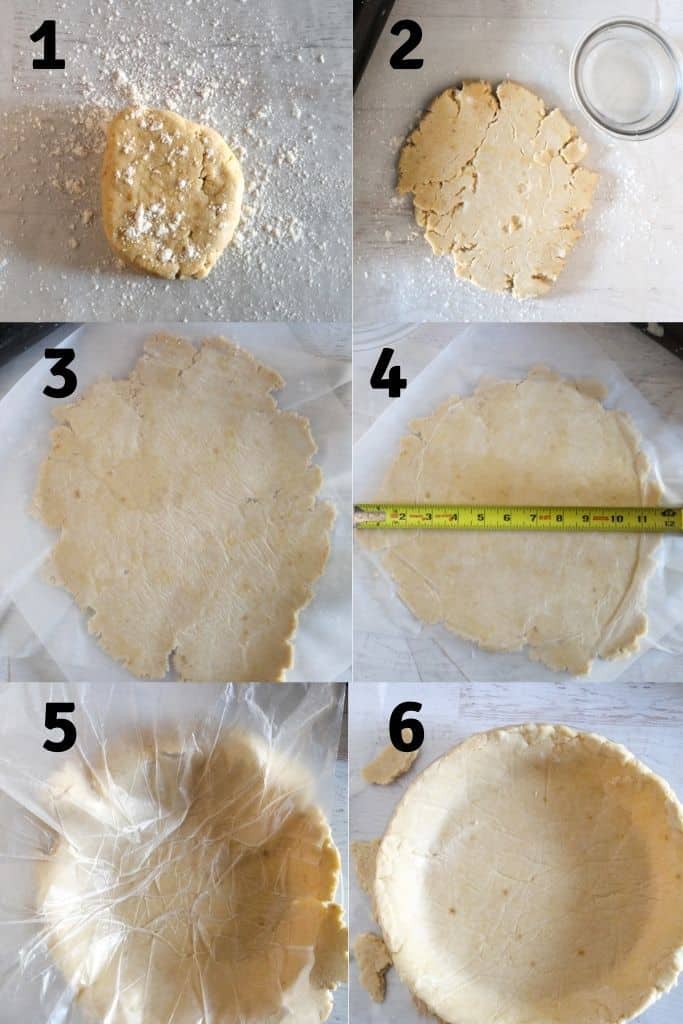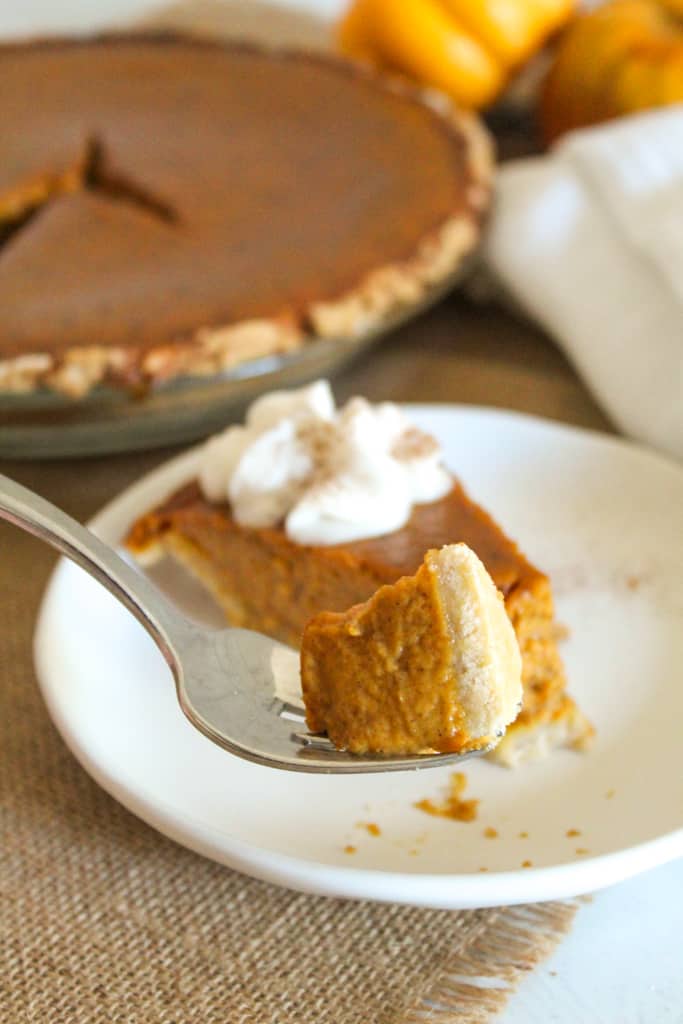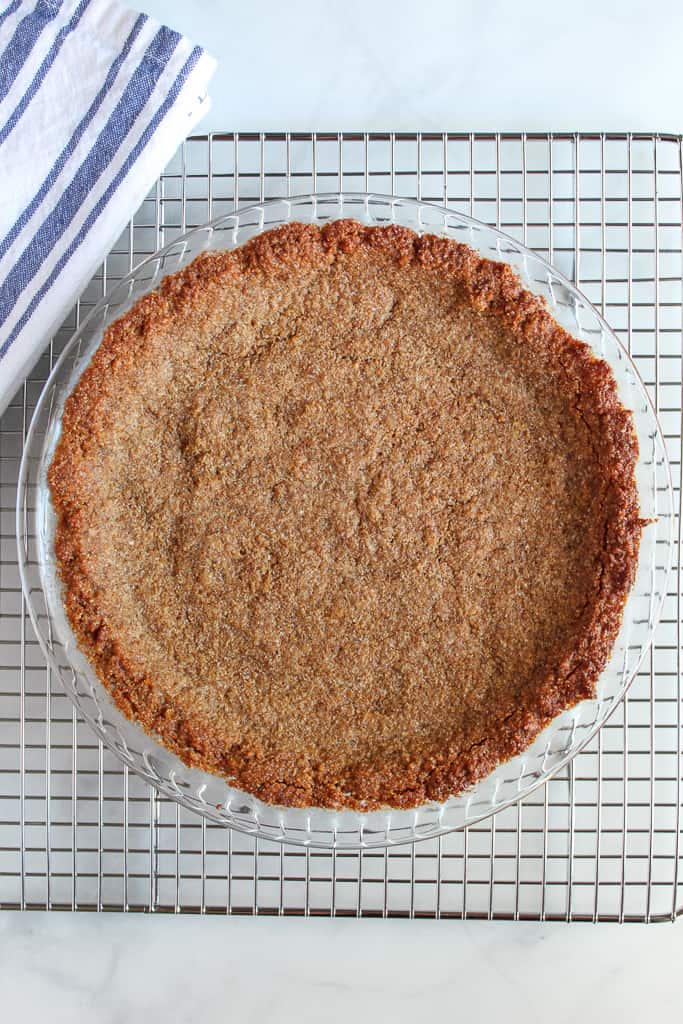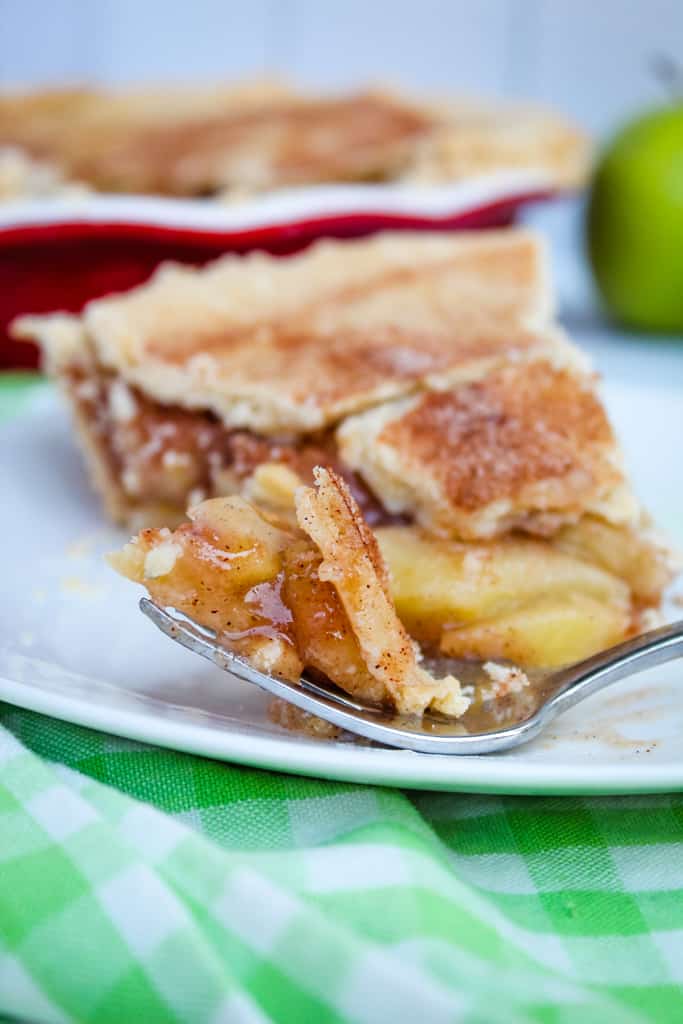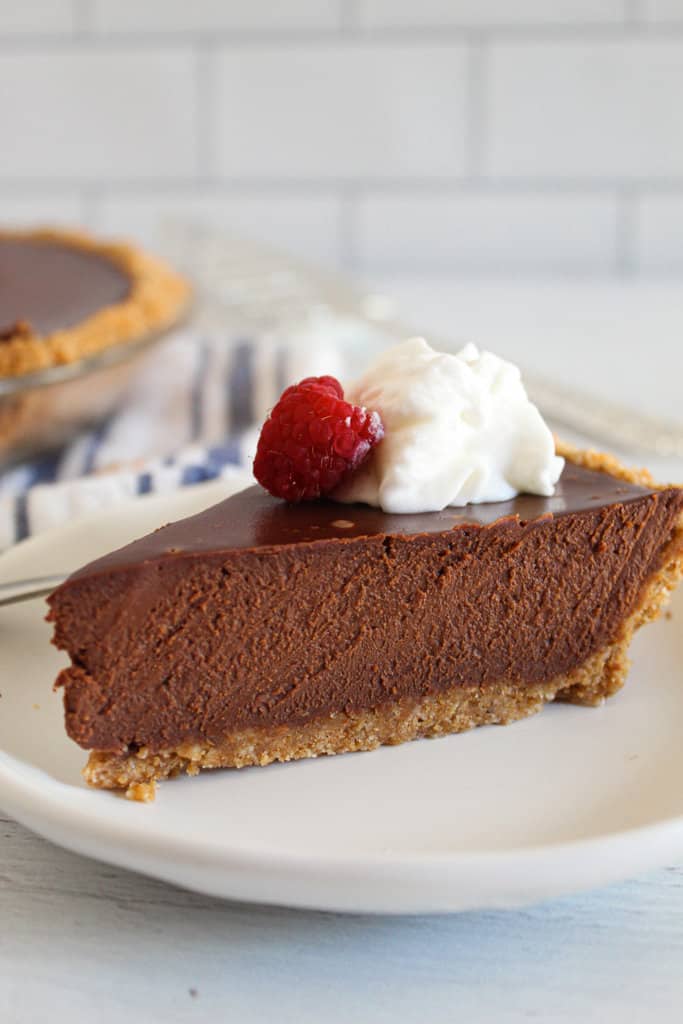Gluten Free Pie Crust Recipe: Best Flaky Texture
This tender, flaky gluten free pie crust recipe is reminiscent of the flaky crust of a regular pie crust. With simple ingredients, it makes an incredibly tasty, golden brown pie crust. And this easy recipe is dairy free too!
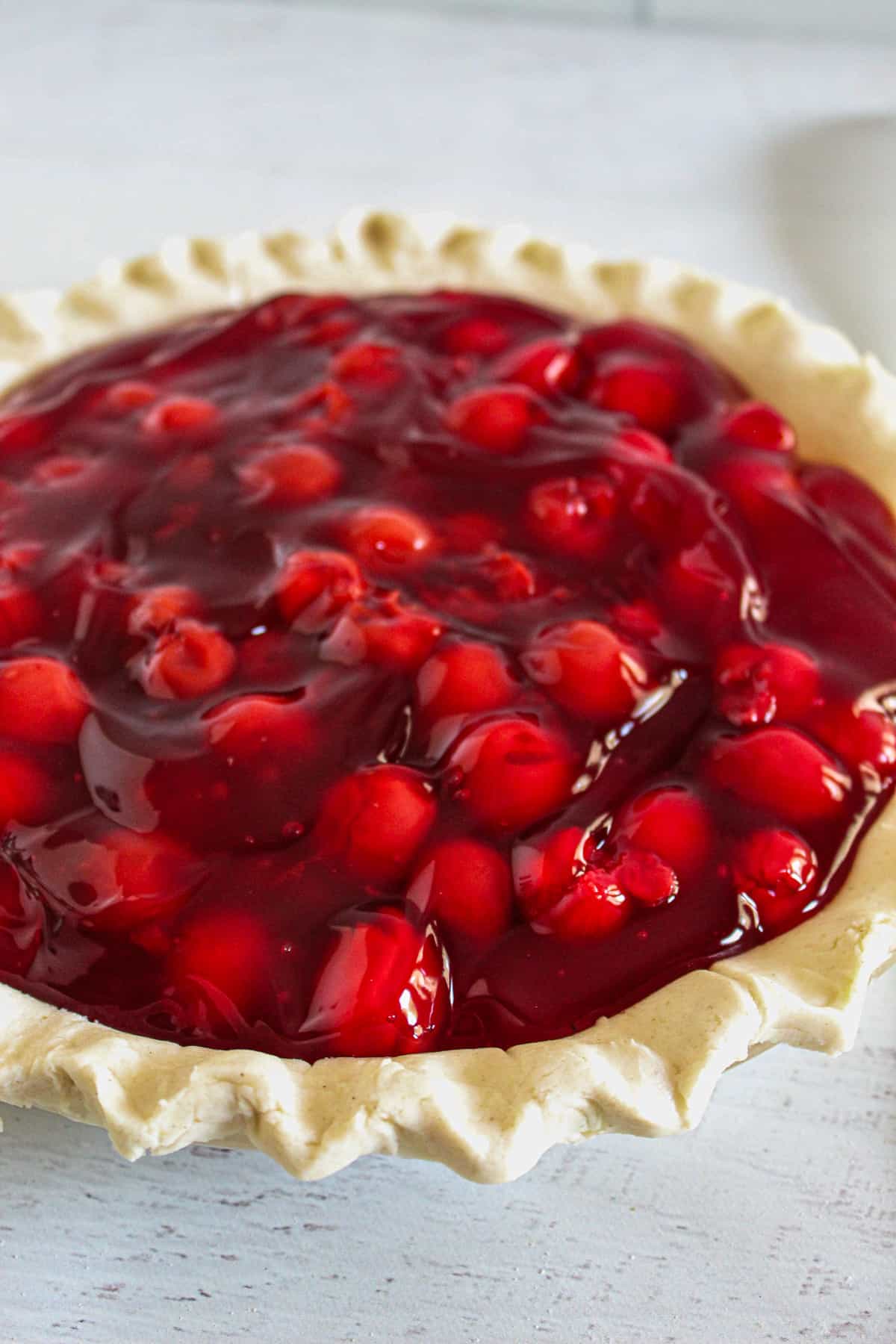
Whether this is your first gf pie crust recipe to try or you’ve made dozens of them, this is a pie crust that will be one of your family’s favorites. It’s perfect for sweet pies like like this apple pie or this pumpkin pie or you can omit the sugar and use it for savory pies. Either way, this is an easy gluten-free pie crust you cannot go wrong with. Follow the step by step instructions below for the most flaky texture of this traditional pie crust.
Table of Contents
Looking for some gluten free baking substitutes and how-to’s? Check out these coconut sugar substitutes, corn flour substitutes, xanthan gum substitutes, and gluten free vanilla extract brands.
Gluten-Free Pie Crust Recipe at a Glance
This recipe makes 3 pie crusts so it’s perfect for a double-crust pie like this gluten free apple pie and then you have one left over for single-crust pies like this gluten free chocolate pie. This crust is also:
- Dairy free
- Quick to mix with either a food processor or a stand mixer (just like these strawberry cake mix cookies!)
- A perfect pie crust to use for a blind bake (baking the pie crust before filling) or for adding pie filling and then baking. More on blind baking in Pro Tip #4.
- Easy to roll pie crust dough
I’ll share some tips for mixing and handling it below, but if you’ve been hesitant to make a homemade pie crust in the past, this is your time to give it a-go as this is a VERY forgiving recipe!
Ingredients & Substitutions for the Perfect Pie Crust
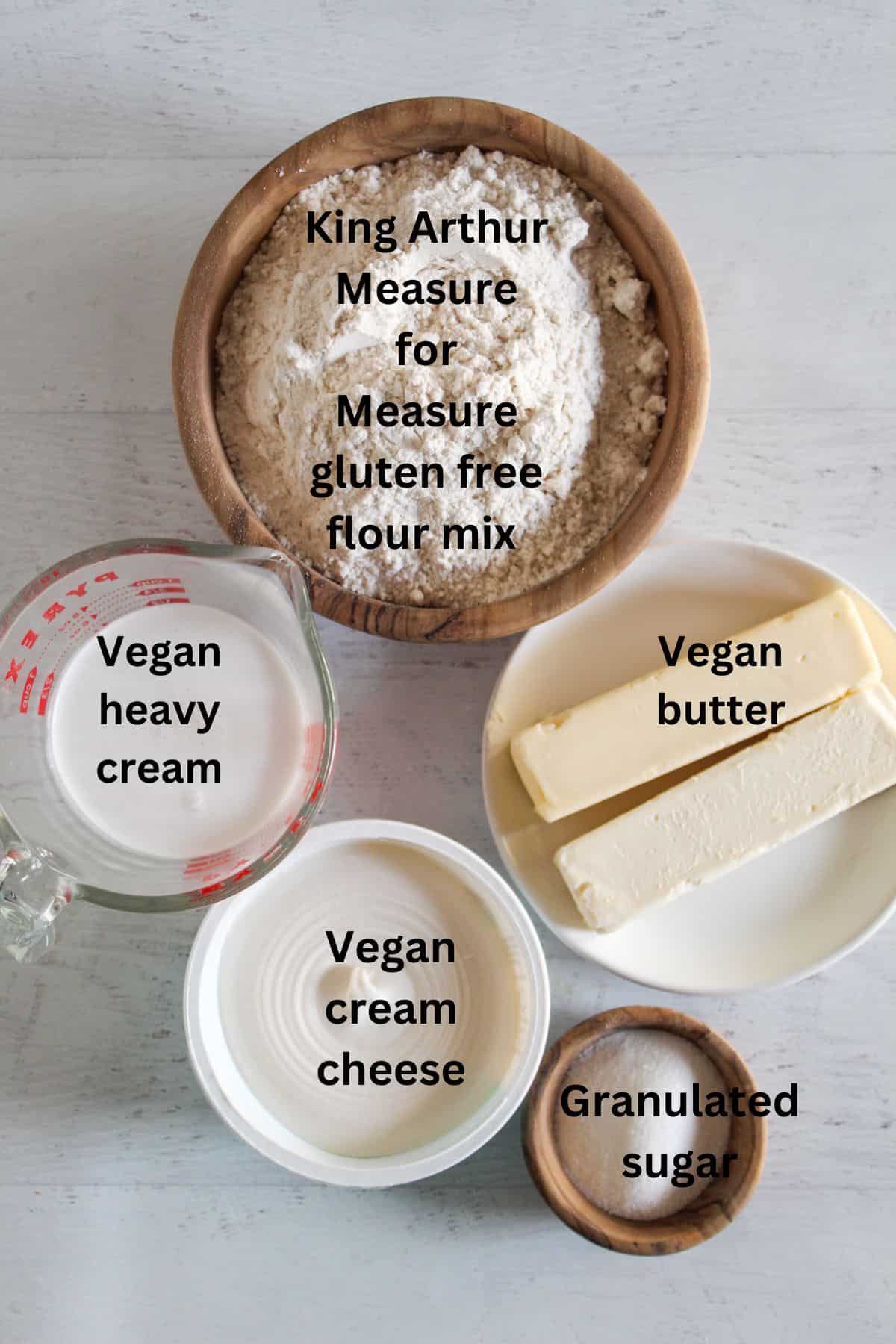
The ingredients list is super short for this recipe. Below are the ingredients I use and recommend and then an equivalent substitution if there is one:
- Vegan Cream Cheese – The vegan cream cheese is an essential ingredient for making a truly flaky crust. The brands tested that work well in this recipe are Kite Hill and Violife. Other brands may work they just haven’t been tested. I would not recommend substituting the cream cheese, however regular cream cheese can be used.
- Vegan Butter – I used the Country Crock vegan butter sticks in this recipe and they work wonderfully. The Earth Balance brand will work equally well. Solid (not melted) coconut oil also works as a substitute as does regular, salted butter if you can tolerate dairy.
- Vegan Heavy Cream – The Silk brand was used in this recipe. Acceptable substitutes for the dairy free heavy cream include: regular heavy cream and canned coconut cream (the cream part on the top of the can).
- Gluten-Free Flour Blend – The King Arthur Measure for Measure Gluten Free flour mix was used in this recipe. Other gluten free flour mixes may work but have not been tested. If opting for another flour mix, be sure it includes xanthan gum. I would not recommend substituting with a single gluten free flour as a flour mixture provides the needed balance of flours to starches for this gluten-free crust.
- Granulated Sugar – The sugar may be cut down if desired or omit it if making something savory.
Exact measurements for the ingredients for this flaky pie crust are listed in the recipe card below.
Step by Step to the Best Gluten-Free Pie Crust
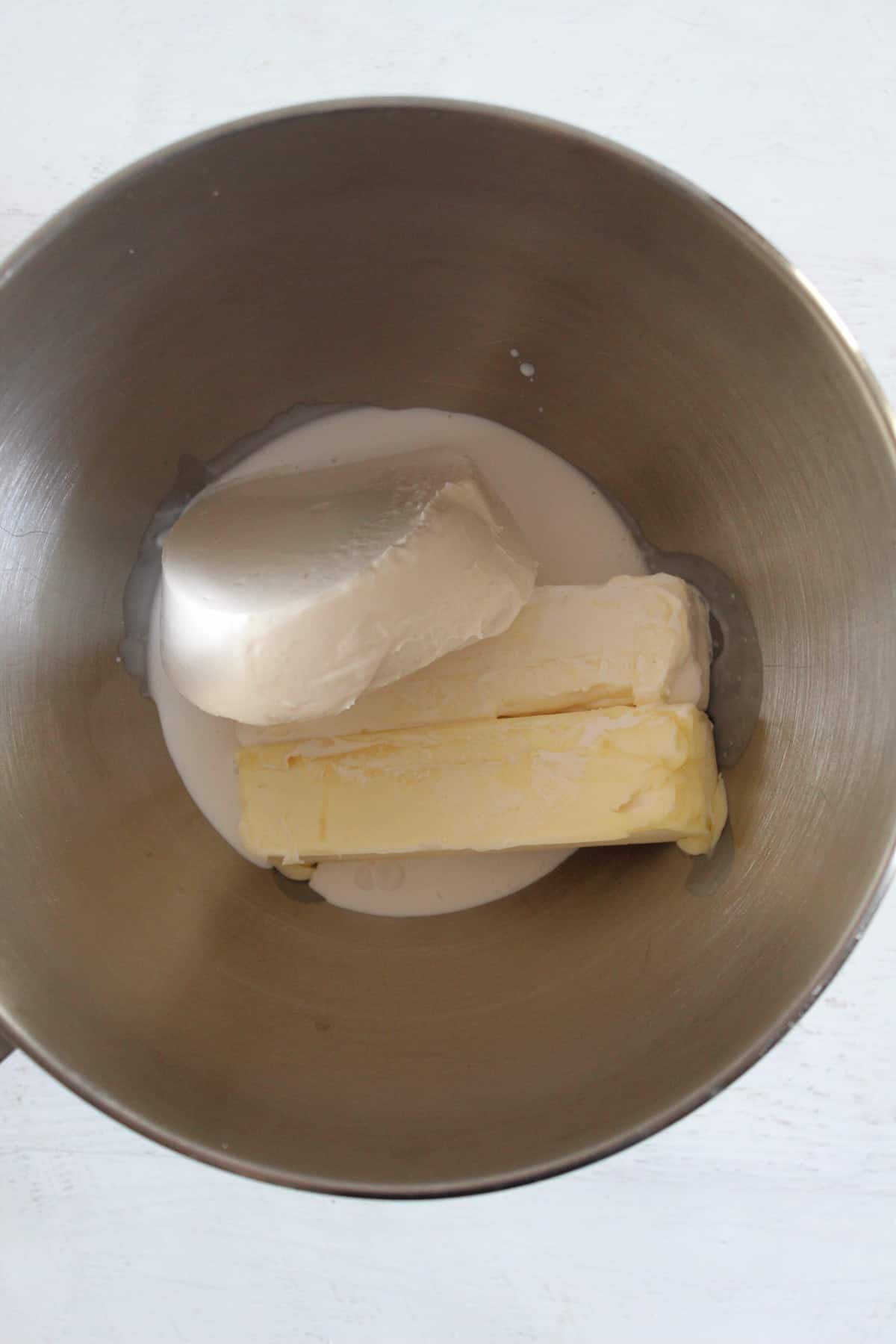
Step one: In a large bowl with hand held beaters, or in the bowl of a stand mixer, combine the vegan butter, vegan cream cheese and vegan heavy cream until fully blended. (For food processor instructions, see Pro Tip #3).
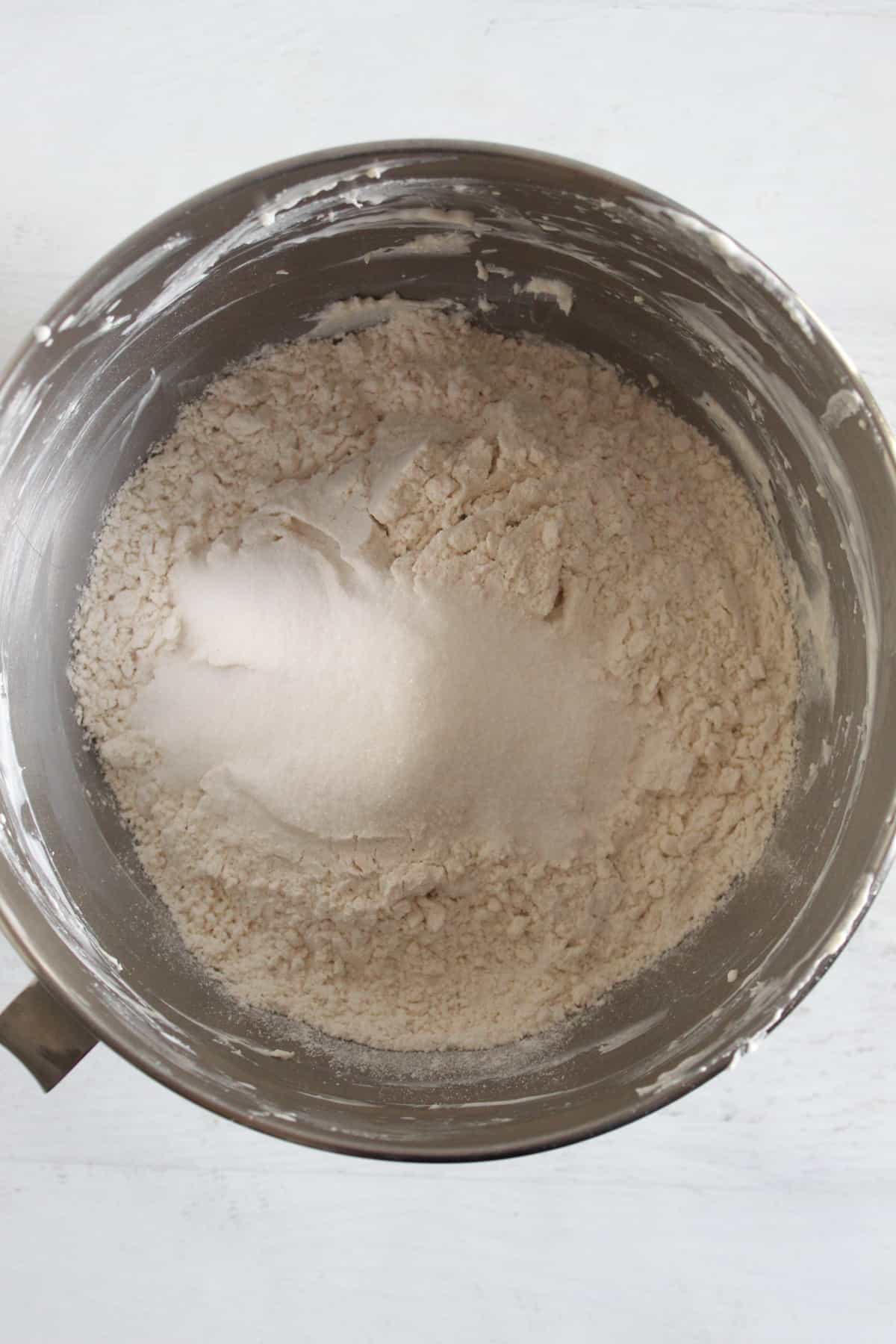
Step two: Add in the dry ingredients – gluten free flour blend and sugar – and mix on low speed for 30 seconds, scraping down the bowl.
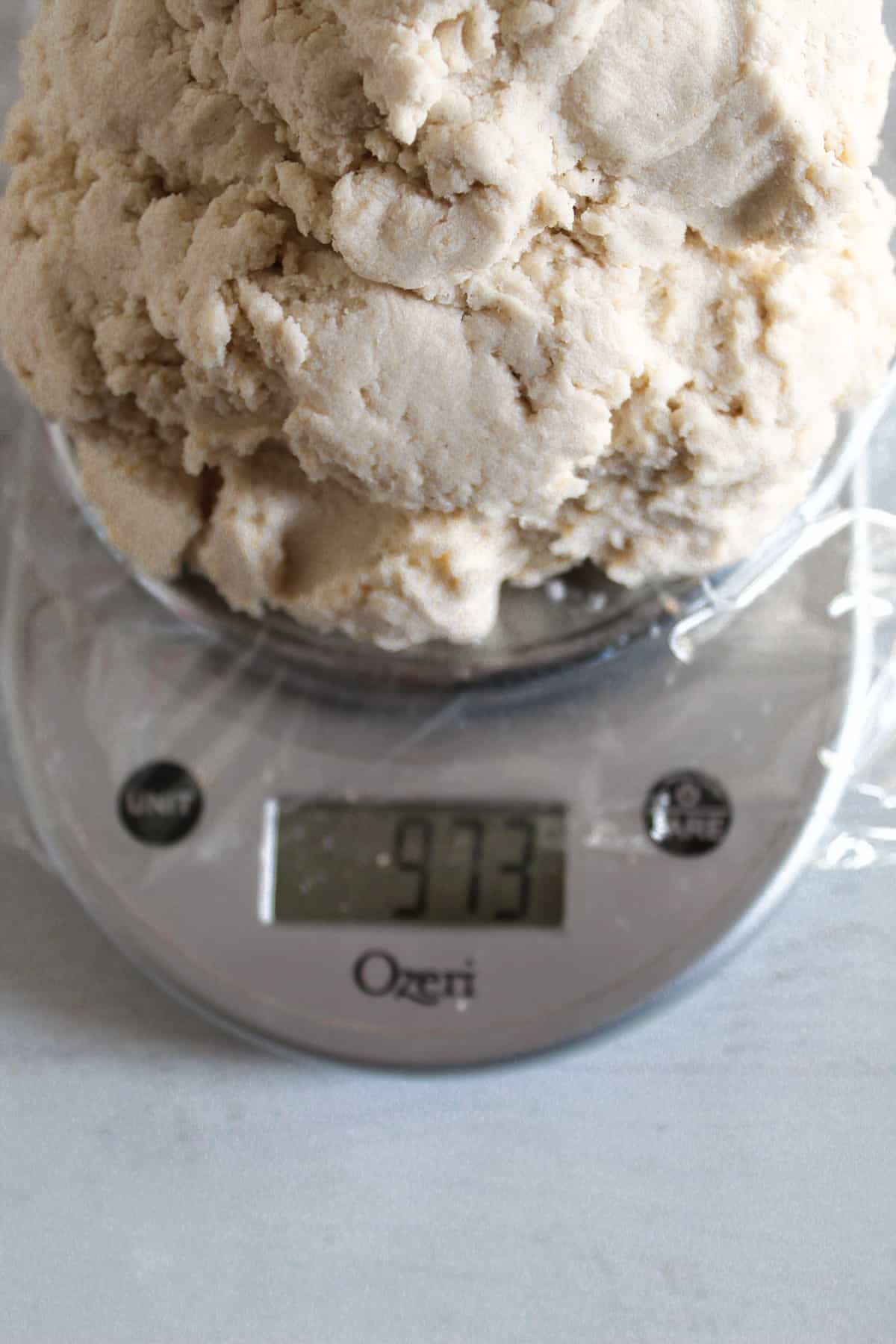
Step three: Use a piece of plastic wrap to place on the digital scale to weigh the dough portions.
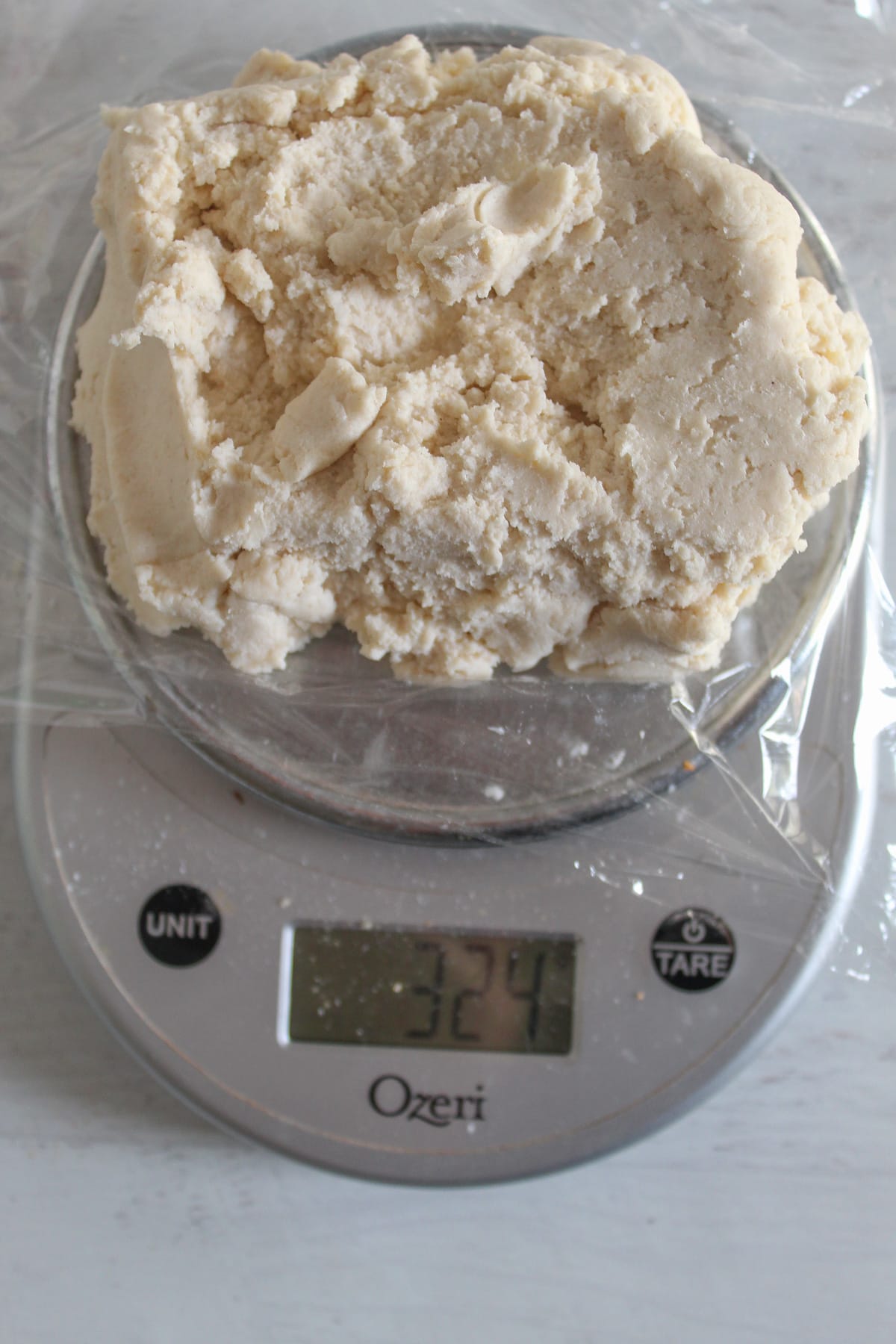
Step four: Each portion of dough should weigh around 322 – 324 grams each.
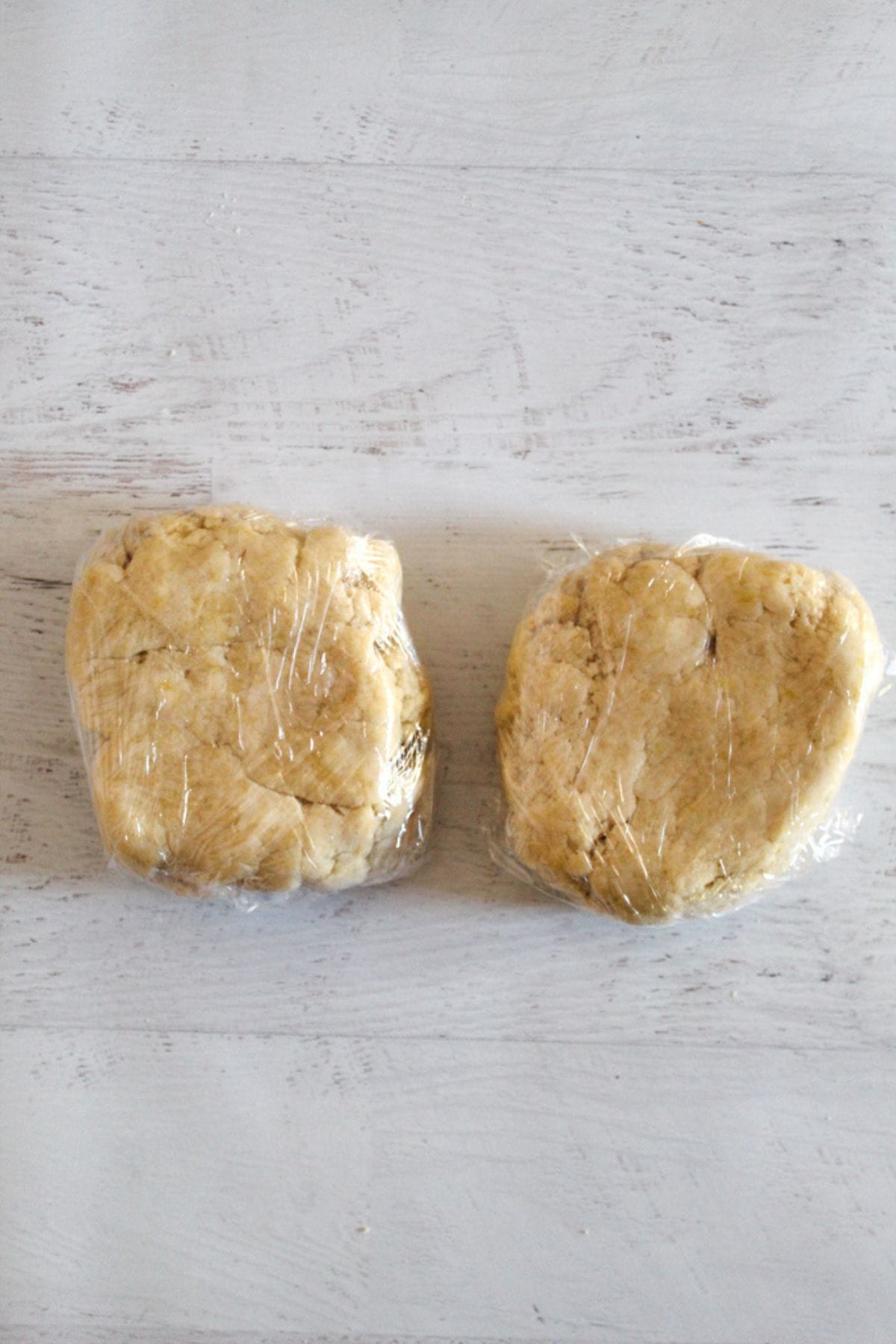
Step five: Flatten each portion into a disk and refrigerate for 30 minutes to firm up the dough before rolling. See Storing this Gluten Free Pie Crust below for more on storing the dough at this point.
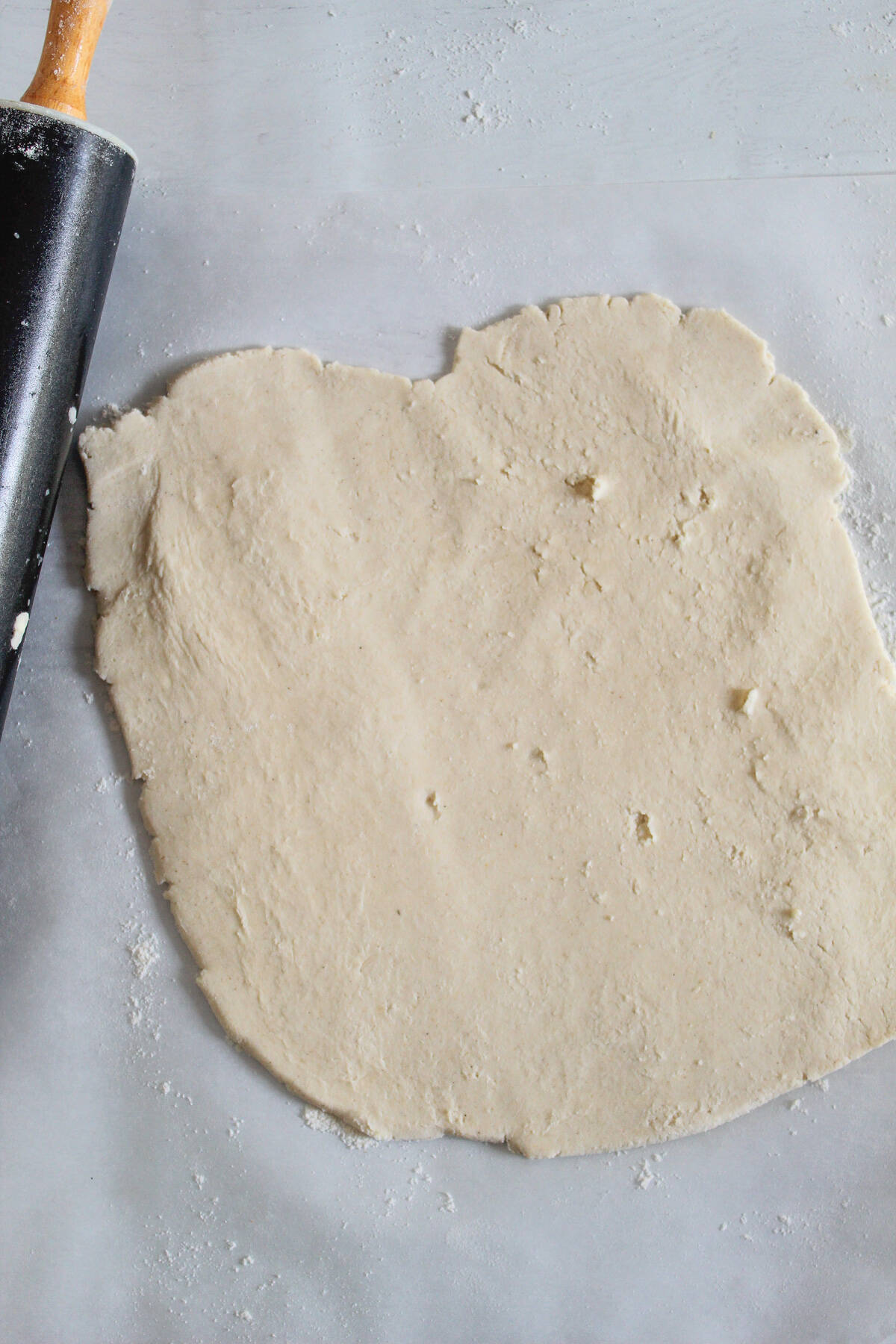
Step six: Place a large piece of parchment paper on your work surface and sprinkle lightly with additional flour mix. Place one disk of chilled dough, keeping the other chilled until needing.
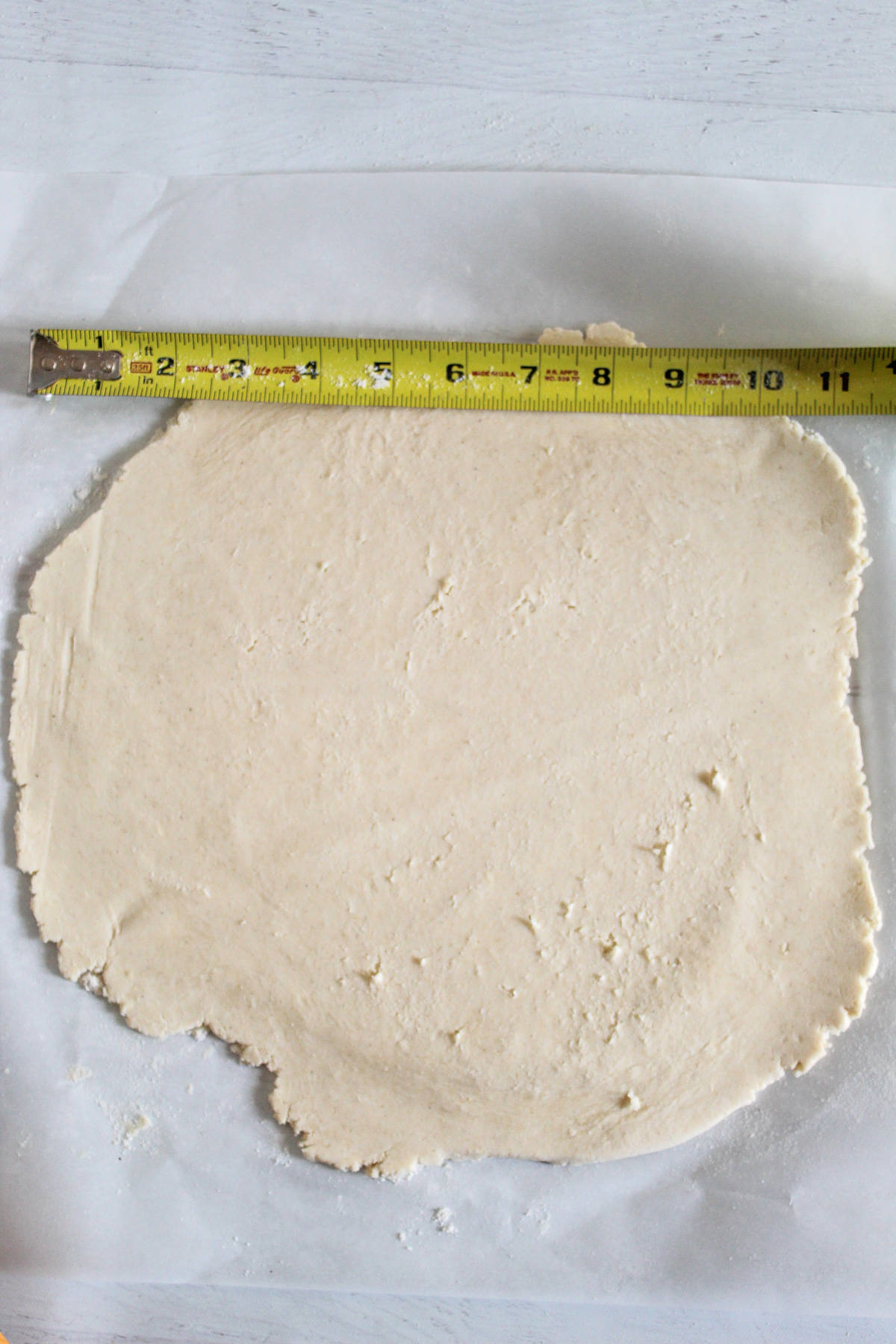
Step seven: Roll the dough evenly, to an 11-inch round, turning the parchment as you go to create a round crust. Sprinkle with additional flour if needed.
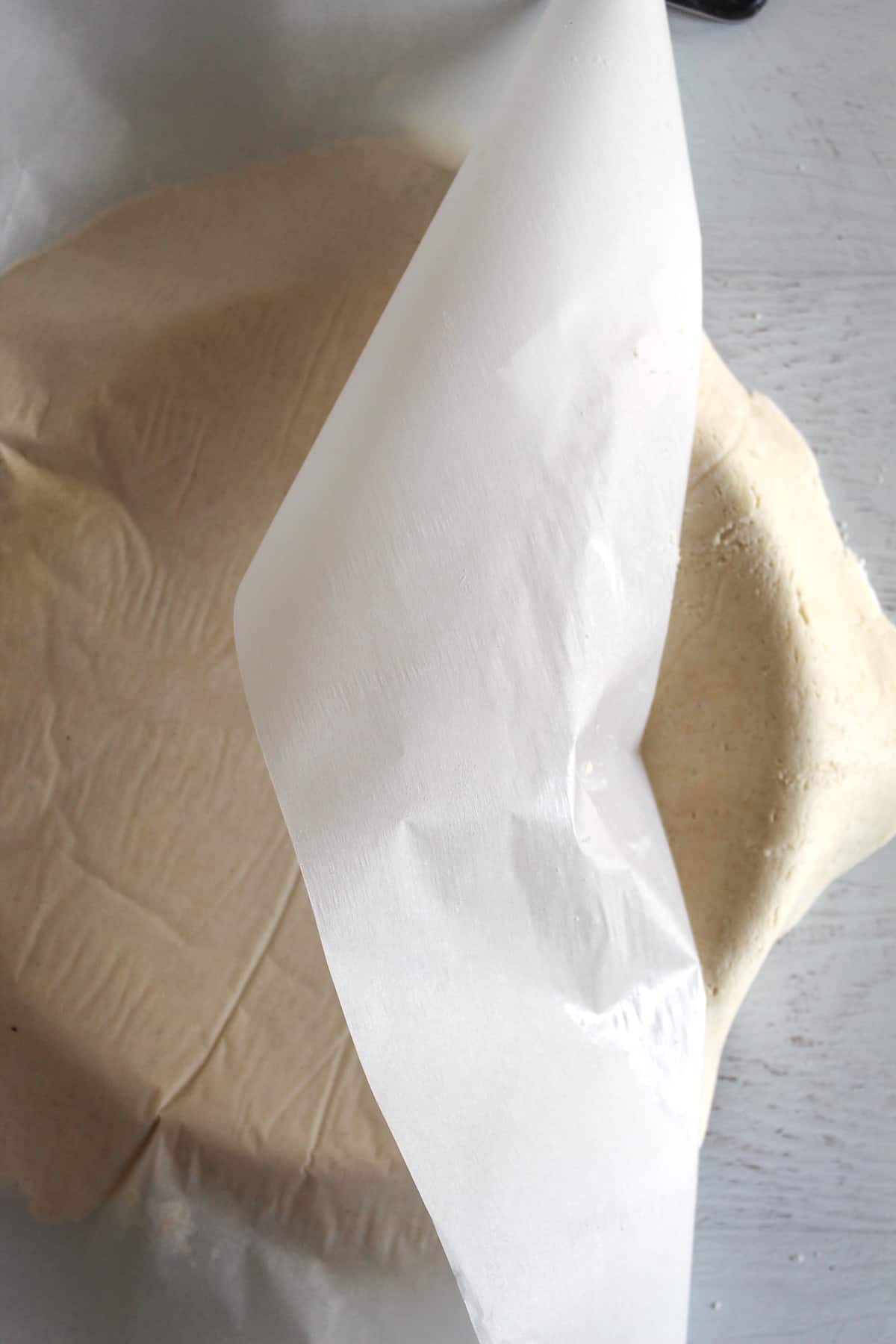
Step eight: Place your pie pan close to the rolled crust and use the rolling pin to drape the crust over it. Place the crust into the pie plate.
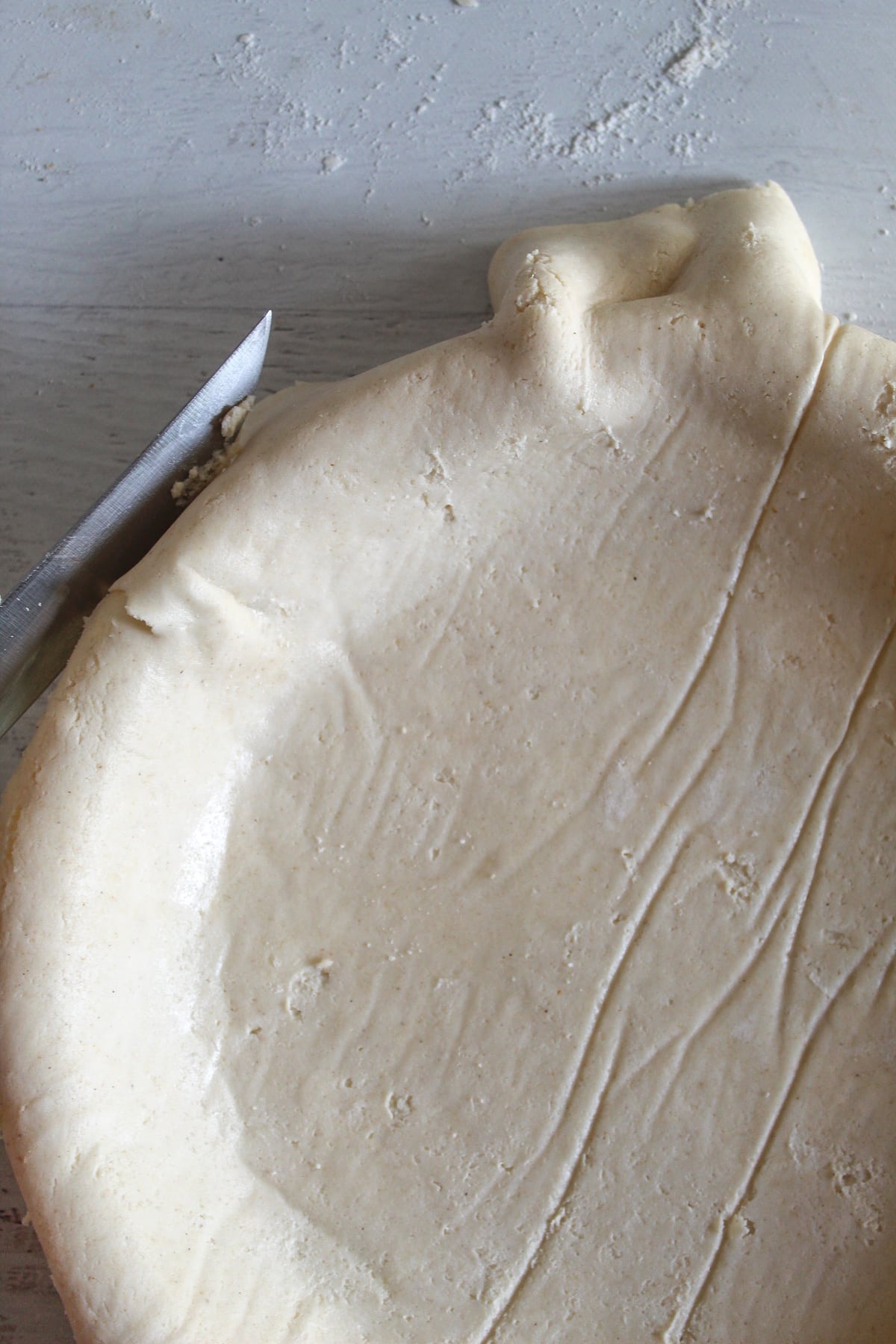
Step nine: If making a single crust pie, this bottom crust is all you need. Trim the long edges and make a decorative edge.
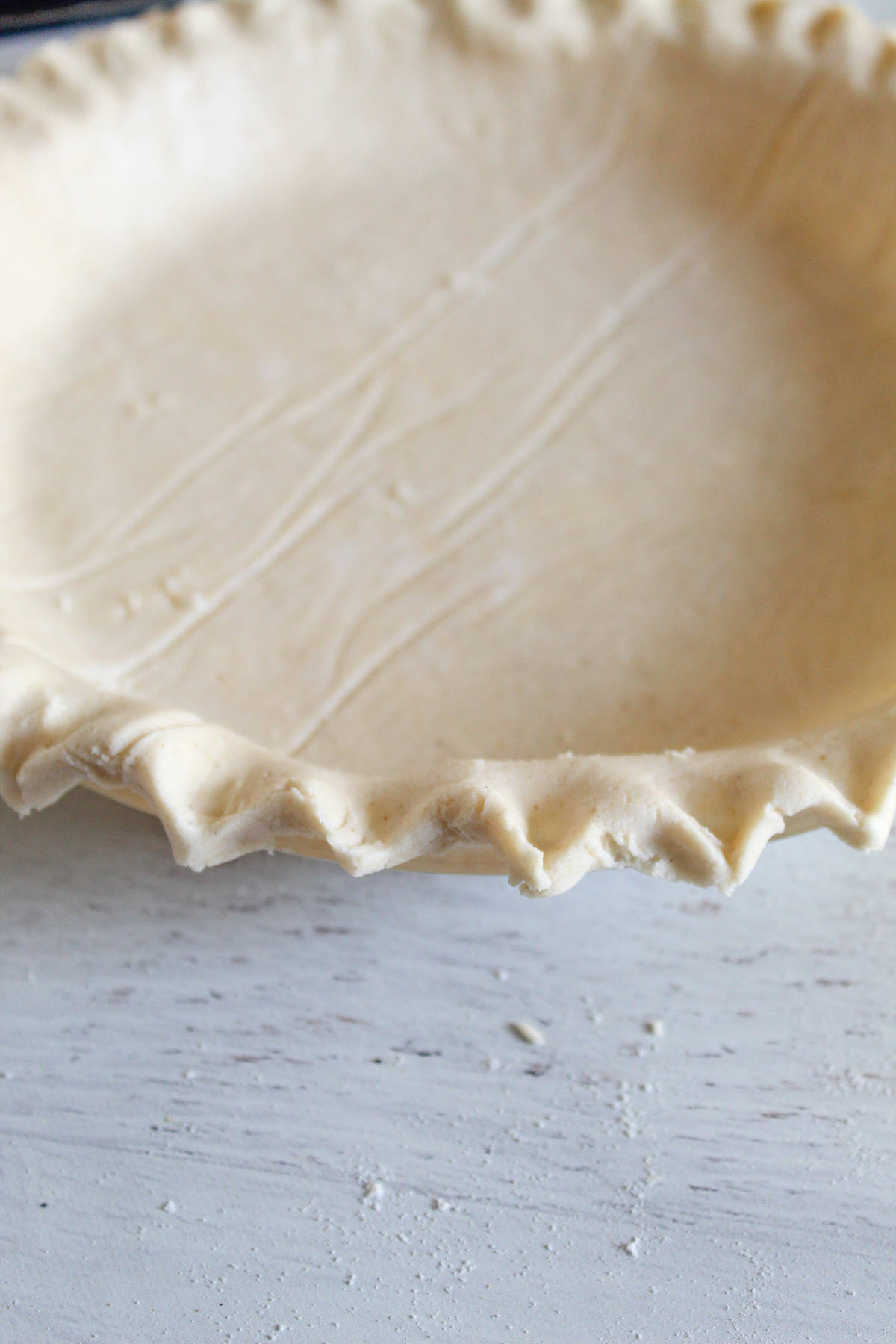
Step ten: If making a double crust pie, repeat the process of rolling another disk of dough to an 11-inch round circle. This will be your top crust. At this point you are ready to fill it or blind bake it (see Pro Tip #4 below on blind baking).
Storing this Gluten Free Pie Crust
There are three different options for storing pie crust dough. The best thing to do for storage depends on how far along you are in the gluten-free crust making process:
- Once the disks of pie crust have been formed, they can be stored in the refrigerator for up to 5 days. If they have been chilled this long, allow them to warm for 20 minutes before rolling out.
- For longer storage of each disk of dough, place each one into an airtight container or plastic bag and freeze. Pie crusts may be frozen for up to 3 months. Defrost and use as directed.
- For storage of a rolled pie crust in a pie plate, they can either be chilled or frozen. In either case, wrap the pie pan well with plastic wrap or aluminum foil and place in the refrigerator for up to 2 days or freeze for up to 3 months.
Pro Tips for a Flaky Gluten-Free Pie Crust
For the best pie crust, follow these tips:
1. Weigh the Ingredients
Like other gluten free baked goods, these dinner rolls and this brown bread especially come to mind… accuracy is incredibly important in gluten free baking. In fact, it’s the difference between a light and fluffy roll and a dense gummy bread. The same is true for this pie crust.
Use a digital scale like this one to ensure that your butter, flour, and sugar are measured correctly. Even a Tablespoon more or less will alter the consistency of the crust.
2. Use Room Temperature Ingredients
As I discuss in this baking guide and my baking class, room temperature ingredients blend better and make for a better textured baked good – this pie crust included. Unlike when using a pastry cutter to cut in cold butter, like in these gluten free biscuits, the butter-cream cheese mixture of this gluten free pie crust recipe should be creamy and well blended, like in this yummy almond flour oatmeal cookie batter.
3. Food Processor Instructions
If opting to use a food processor for mixing the gluten-free pie dough, follow these instructions:
- Use a large, 8 cup model, otherwise the ingredients won’t get mixed properly.
- Add the vegan butter, vegan cream cheese and vegan heavy cream to the bowl.
- Pulse a few times to fully mix the wet ingredients.
- Add in the flour blend and the sugar and pulse again a few times until a ball of dough forms.
- Proceed to weighing the dough.
Another option is a Kitchen Aid stand mixer to mix the dough.
4. Blind Baking
Blind baking simply means baking an unfilled pie crust. Typically the pie crust dough is filled with pie weights to prevent it from puffing up and baked for 10-15 minutes.
When do you need to blind bake a pie crust? When the pie filling will not be baked. For example, if using this pie crust for this chocolate pie recipe, you would need to blind bake the crust because the filling is not baked.
However, in the case of an apple pie, where it is baked, blind baking is not needed.
FAQs about this Homemade Gluten-Free Pie Crust
The recipe has been tested with King Arthur Measure for Measure gluten free flour mix; other mixes may work but they have not been tested. I would not recommend substituting a single flour or starch for the gluten free flour blend. Reference this guide to flours to see why.
The previous recipe was based on brown rice flour (or white rice flour), tapioca starch, cold butter and cold water. After a lot of testing, I revamped the recipe so that’s it’s easier for everyone to have success with, from the beginning baker and beyond.
The crusts can be made, wrapped well and refrigerated for up to 5 days. When ready to use, let the crust come to room temperature before rolling out. Reference the Storing this Gluten Free Pie Crust section for more information.
The key is to wrap it well. Use plastic wrap and wrap the disk of dough so no air can get in. Then place it into a plastic bag and seal the bag. Use or freeze 5 days.
Baking a crust depends on the filling going inside of it… If the filling in the crust is not going to be baked, then yes, you’ll need to do what’s called blind baking and bake the crust beforehand. But if the filling is going to be baked, like in this pumpkin pie, then no, the crust does not need to be baked ahead of time.
Favorite Pie Recipes!
Recipe has been updated 8/28/2023 with a new ingredients list and more detailed instructions.
Did you make and love this recipe? Give it your review and ![]() rating below! And make sure to follow me on Instagram, Pinterest and Facebook too!
rating below! And make sure to follow me on Instagram, Pinterest and Facebook too!

Gluten Free Pie Crust Recipe: Best Flaky Texture
Ingredients
Method
- In the bowl of a stand mixer, combine the vegan butter, vegan cream cheese, and vegan heavy cream for 30 seconds until completely combined.
- Add the gluten free flour mix and granulated sugar. Mix on low speed until a ball of dough forms, scraping the bowl as needed.
- Turn the dough out onto a piece of plastic wrap.
- Divide dough into 3 pieces and weigh each one for roughly 322-324 grams each.
- Flatten each one to a disk and wrap well in plastic wrap. Place them in the refrigerator for 30 minutes.
- Remove one disk from the refrigerator and place on a sheet of floured parchment paper.
- Roll dough into an 11-inch circle, turning the parchment as you go, adding bits of flour as necessary.
- When ready to move the dough to the pie plate, gently pick up and drape half the dough onto the rolling pin and move it to the pie plate, gently laying it inside the pan. Remove the parchment paper. If if cracks, simply press it back together.
- Trim off any long edges and make a decorative edge with your pinky finger if desired.
- At this point the crust is ready to be filled or blind baked. If making a double crust pie, repeat the steps, starting at removing the disk of dough from the refrigerator.
Video
Notes
- This recipe was tested with King Arthur Measure for Measure Gluten Free Flour Mix. Other mixes may work, but have not been tested.
- Vegan butter may be substituted with regular butter or solid coconut oil.
- Vegan heavy cream may be substituted with canned coconut cream (the cream toward the top of the can).
- This crust may be mixed in a food processor (follow instructions in Pro Tips section, #3).
- When rolling the dough, first place the dough on a floured parchment paper, then sprinkle lightly with a bit more flour.
- You may need a bit more flour to prevent the rolling pin from sticking to the pie crust.
- If the dough cracks when laying it in the pie plate, simply press it back together.
- It is not necessary to bake before filling the pie crust. But if you opt to, follow the instructions for blind baking in Pro Tips section, #4.
Original pictures of the recipe:
